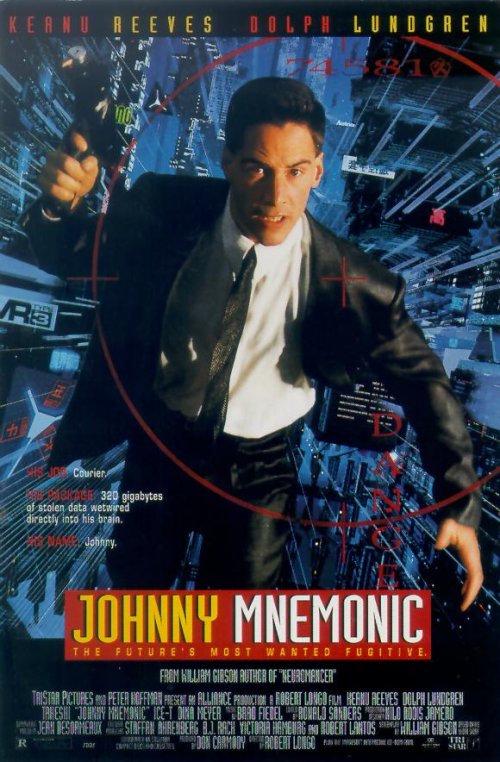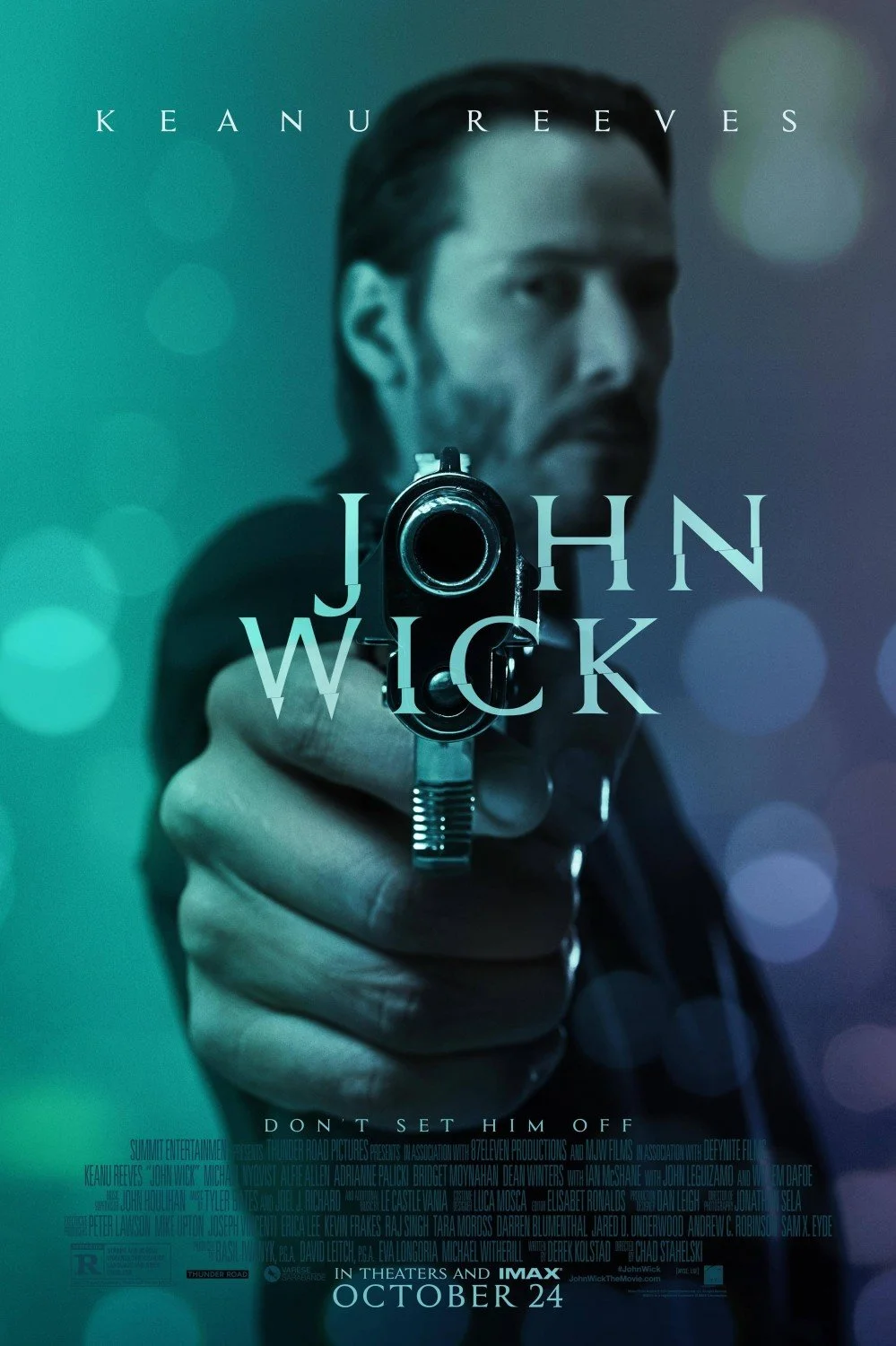Country:
Canada/USA
Recognizable Faces:
Keanu Reeves
Dina Meyer
Ice-T
Takeshi Kitano
Dolph Lundgren
Henry Rollins
Directed By:
Robert Longo
William Gibson is to cyberpunk what James Brown is to soul. He might not have created the genre out of thin air, but he's the first name that comes to mind where you think about it. His novel Neuromancer is a bible for the writers and the fans of the genre, but those who read it will admit it's almost impossible to turn into a movie. Hollywood briefly tried to turn the cyberpunk in a quick buck during the second half of the nineties. After all, it's a very visual style. Strange Days (1995) and The Matrix (1999) were two of the most notable attempts. The first high profile attempt to cyberpunk was Johnny Mnemonic, which was based on William Gibson's short story of the same name. A logical place to start.
So in the much different world of William Gibson, important data is no carried in human hands anymore. They are carried into human consciousness. Mnemonic couriers, people with their brain modified with storage implants, carry copious amounts of data without running the risk of losing it. Johnny (Reeves) is one of those couriers. His head is able to store up to eighty gigabytes, double even if he uses augmentation support. When Johnny goes to Beijing to meet a client, their demand is exceeding anything he can carry. Three hundred and twenty gigabytes. More than twice what he can safely store. If he decides to store it, it's going to destroy his brain given enough time. Johnny accepts, knowing that he has only a day or two ahead of him to do the drop off. But of course, everybody is after the package, the Yakuza steal half of the encryption code, so Johnny is stuck with his package. He has to travel to Newark and has a day or two ahead of him.
Part of Johnny Mnemonic's charm and part of its downfall lies in the fact that it aged awfully bad. Cyberpunk's appeal is the social chaos brought by advanced technology. Johnny is supposed to be a start of the art technological artifact in 2021, but in 2011, he can store as much as any given home computer. I bought my machine in 2007 and it can store more than his safe amount of data (220 gigabytes). It's just one example of how Johnny Mnemonic belongs to another era. Cyberpunk writers dreaded the future and the fall of civilization, which brought them to create this fascinating picture of high-tech dark ages where it's chaos in the street and the few rich Oligarchs are locked in comfortable sky scrapers. It's an imaginary that will soon drift to the same layer of representation that the early century science-fiction writers, who imagined flying saucer spaceships, made out of metal and bolts. Part of the appeal of this kind of imaginary is slowly slipping into irrelevance.
That said, Johnny Mnemonic is still branded with William Gibson's seal of quality. It's rather straightforward storytelling, without any kind of sucker punching twist, but it's carrying interesting ideas about access to information. The citizens of Newark (and pretty much, the world) are ravaged by a disease called Nerve Attenuation Syndrome (that makes them do the bacon dance, like Dina Meyer does so well) and part responsible for the destruction of society's fabric is the lack of information. The streets are filled uneducated self-made men who have violence for only business. Guns prove to be weak at doing anything but prolonging the street level conflict and empowering the faceless bureaucracy even more. The characters are great, well-defined, but often suffer of bad interpretation. The best character by far is the maniac street preacher, interpreted by Dolph Lundgren. No, Johnny Mnemonic hasn't aged well, but it's still fascinating to watch. It persists as the best, most faithful cyberpunk adaptation.
SCORE: 74%


